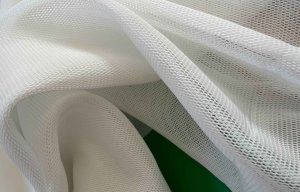
Permanent performance with new Baltex spacer
Around 100 square metres of oil film removed from the surface of water in an hour.

22nd December 2023
Innovation in Textiles
|
Germany
Researchers in Germany from ITA Aachen and the University of Bonn, working with technical textiles manufacturer Heimbach, have developed a new method for removing oil spills from water surfaces in an energy-saving, cost-effective way and without the use of toxic substances.
The method is made possible by a technical spacer fabric that is integrated into a floating container – a single small device can remove up to four litres of diesel within an hour, corresponding to around 100 square metres of oil film on a water surface.
Despite the steady expansion of renewable energies, global oil production, oil consumption and the risk of oil pollution have increased steadily over the last two decades. In 2022, global oil production amounted to 4.4 billion tons and accidents often occur during its extraction, transportation and use, resulting in serious and sometimes irreversible environmental pollution.
There are various methods for removing this oil pollution from water surfaces but all have shortcomings that make them difficult to use, and in particular, limit the removal of oil from inland waters.
Floating fern
For many technical applications, unexpected solutions come from the field of biology. Millions of years of evolution led to the optimised surfaces of living organisms for their interaction with the environment. A long-term examination of around 20,000 different species has revealed that there is an almost infinite variety of structures and functionalities, but some species stand out for their excellent oil adsorption properties. The leaves of the floating fern Salvinia molesta, in particular, very efficiently adsorb oil, separating it from water surfaces and transporting it on their surfaces.
It is this effect that has been mimicked in the development of the new technical textile – a superhydrophobic spacer fabric that can be produced industrially and is therefore easily scalable.
The bio-inspired textile is integrated into a floating device for oil-water separation and collection unit, the Bionic Oil Adsorber (BOA).
The oil is separated from the surrounding water by the surface properties of the textile and transported through the textile driven solely by capillary forces – even against gravity. When it reaches the end of the textile in the collection container, the oil desorbs without any further external influence due purely to gravitational forces.
Comparing the BOA decvice to commonly-employed nonwovens used as oil sorbents, the researchers have calculated it can be between 5 to 13 times cheaper as a result of the significant amount of oil it can rapidly remove.
The textile can also be used in various related separation processes and is currently being further developed prior to a market launch in 2-3 years’ time.

Business intelligence for the fibre, textiles and apparel industries: technologies, innovations, markets, investments, trade policy, sourcing, strategy...
Find out more